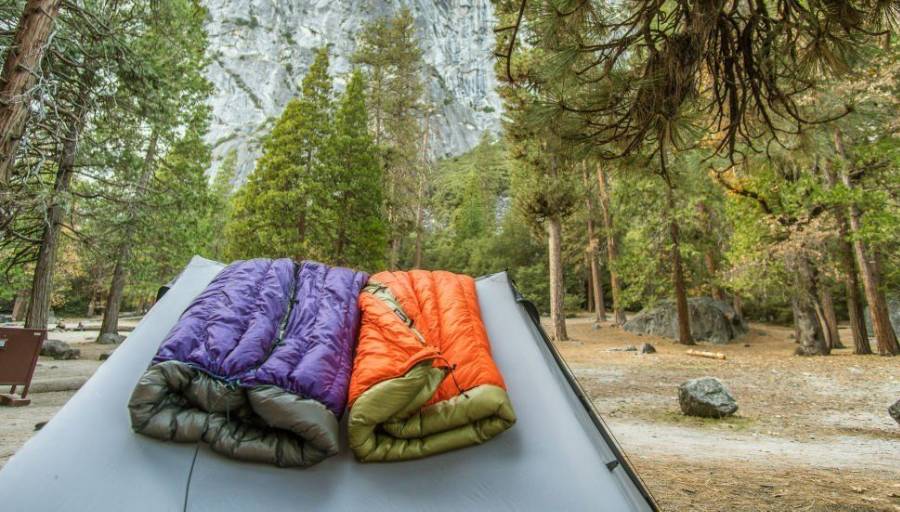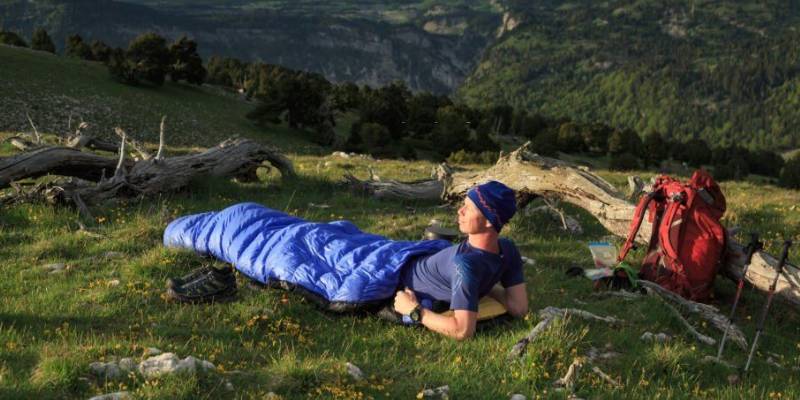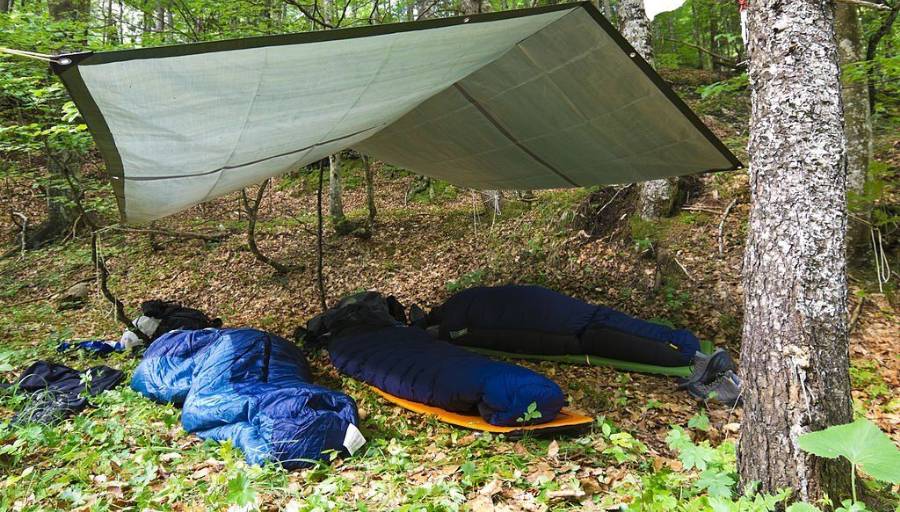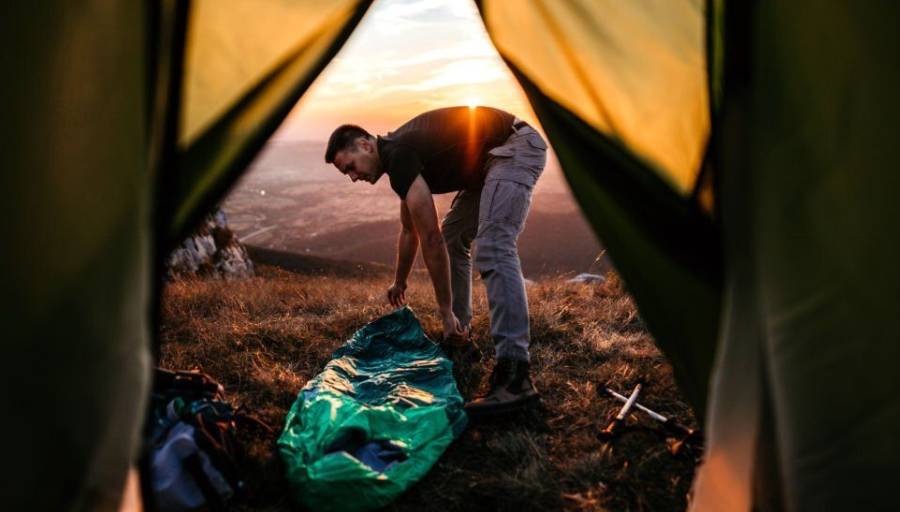How to Choose a Backpacking Sleeping Bag

Selecting the right backpacking sleeping bag is crucial for a comfortable and safe outdoor adventure, especially in extreme cold conditions and high-altitude environments. Knowing how to choose a backpacking sleeping bag involves deciding between ultralight, synthetic, or down options based on your trip’s specific conditions, personal preferences, and budget. Understanding the key features of each type will help you stay warm, comfortable, and well-rested throughout your journey.
In this guide on how to choose a backpacking sleeping bag, we provide comprehensive insights to assist you in making an informed decision.
Importance of the Sleeping Bag When Hiking
The sleeping bag is important for several reasons:
- Optimal Recovery: A quality sleeping bag is akin to a premium mattress, offering comfort and warmth to ensure a night that meets your expectations. In essence, your sleeping bag should facilitate the ideal conditions for recuperation after a demanding day of hiking. As affirmed by specialists, nothing is more detrimental than a restless night following an exhausting day.
- Extended Time in the Sleeping Bag: Considering you’ll be spending more than a third of your time in the sleeping bag, if not more, it’s crucial to recognize that nights outdoors are inherently longer than those at home. Adapting to the natural rhythm of the sun becomes essential for a seamless outdoor experience.
- Alleviating Night Apprehension: Lastly, the moment when you nestle into your sleeping bag can be an exceptionally enjoyable part of your day. Those who appreciate the nuances of their sleeping bag understand the sensations involved. Therefore, it would be regrettable to compromise this pleasurable experience simply due to an apprehension of the impending night.
How to Choose a Backpacking Sleeping Bag
Here are some key factors to consider when selecting a backpacking sleeping bag:
Weather Conditions
The first question to ask yourself before buying a sleeping bag: what will it be used for?
- Night in a shelter?
- Overnight in a tent in summer or winter?
- Night under the stars?
- Nigh altitude shelter?
- In which climate (hot, temperate, cold)?
Depending on your destination and the weather conditions encountered, the choice of sleeping bag will be (almost) natural. Browse the specialized stores and you will see 3 notions appear:
- Comfort Temperature: The temperature at which you can sleep comfortably, reminiscent of the coziness experienced in the comfort of your home.
- Limit Temperature: The temperature threshold beyond which users may sense a chill, often experienced as a slight discomfort, leading to potential disturbances during sleep. Imagine those moments in the middle of the night when a chill runs down your back.
- Extreme Temperature: The critical temperature point above which survival becomes compromised, emphasizing the harsh conditions that the sleeping bag is designed to withstand for the user’s safety and well-being.
These notions, directly taken from the EN 13537 standard, will give you the indications to guide you in your purchase. We quickly understand that only the notions of comfort and limited temperature are interesting. Clearly, if you are planning a night in a tent in the middle of summer at an altitude of 1200 meters, and you estimate the night temperature at 10°C, a sleeping bag with a comfort temperature of 12°C and a limit temperature of 5° is perfect.
Dimensions and Weight
I still remember my first sleeping bag, which took almost half of my backpack and whose weight penalized me during long walks. Yes, the fundamental principle is that you’ll be responsible for carrying your sleeping bag, unless you’re fortunate enough to have a reliable friend willing to shoulder the load for you.

Therefore, opt for a sleeping bag with a compression bag that enables significant space savings, and ensures that its weight is not excessive. Ultralight bags, weighing less than 1 kg, offer a lightweight option, while the heaviest ones hover around 1,400 kg.
Natural or Synthetic Down?
Before any purchase of a sleeping bag, the question is whether you will opt for natural or synthetic down. Here is a short topo on the advantages and disadvantages of the 2 options. Historically, sleeping bags were made of goose or duck down.
down Sleeping Bag
Advantages:
- Unparalleled warmth and softness. Insurance of a sweet night like at home!
- Very good compressibility in the compression bag (it is always better to take it out as soon as possible).
Disadvantages:
- Requires meticulous maintenance
- Storage can be challenging; it’s better to store it uncompressed to prevent loss of loft and, consequently, a decline in temperature performance
- Its mediocre resistance to humidity
- Often comes with a higher price tag compared to synthetic sleeping bags
Synthetic Sleeping Bag
Advantages:
- Easy maintenance (by machine)
- Storage at home in its compression bag
- Good resistance to humidity
Disadvantages:
- Much less efficient in cold conditions
it becomes evident that down/feather sleeping bags are the preferred choice for more challenging hikes and treks and offer an unparalleled bulk-to-warmth ratio, not to mention their lightweight advantage. However, if you find yourself sleeping in a refuge, there’s no need to break the bank on an expensive option.
Here is a small summary table that can give you some ideas for your future choice of sleeping bag depending on what you want to do with it:
| Details | Synthetic | Extreme synthetic | Down |
| Overnight at Les Flots Bleu campsite | X | ||
| Night in mid-mountain refuge (1000 m altitude) | X | ||
| Night in a high mountain refuge (more than 2000m) | X | X if you are really chilly | |
| Camp under medium altitude tent | X | X | |
| Camp under high mountain tent (more than 2000m) | X | X | |
| Winter camping under tent | X | ||
| Mountain hike under the stars | X |
Shape and Size
Unless you want to sleep with a teddy bear bigger than either, we will prefer a sleeping bag to its size. The larger the sleeping bag, the greater the volume of air to be heated by the body. The ideal is therefore to opt for a bag that best matches the shape of the body. This is what the Mummy Sleeping Bags offer. Unlike rectangular sleeping bags also called “cover bags”, mummy-style sleeping bags are wider at the shoulders than at the feet.
Mummy sleeping bags all have a hood, a significant detail when you know that 30% of body heat loss occurs through the head. However, the disadvantage of the bag that hugs the silhouette is its confining side that some people can’t stand.
Gender-Specific
Some sleeping bags are designed specifically for men or women, taking into account variations in body shape and insulation needs. Women’s bags may have more insulation in certain areas.
Insulation
There is no point in having a good sleeping bag if the insulation with the ground leaves something to be desired. It will therefore be imperative to insulate your body/down from the ground to avoid thermal bridges. Use floor mats or inflatable mattresses. It is as important as the choice of the bag if not more.
Additional Measures
To gain a few degrees, you can also slip into a silk or cotton bag before putting on your sleeping bag. Another significant advantage, you will dirty your sleeping bag less quickly. You can also bring technical underwear in wool for example (absolutely avoid synthetic).
The New Sleeping Bags
For Ultralight backpacking fans, new sleeping bags have just appeared:
- Elephant’s Foot: This unique sleeping bag features the removal of its upper part, covering only the legs and pelvis. Consequently, users are required to utilize their daytime clothes to cover the upper body.
- Quilt: The quilt takes a minimalist approach by eliminating the entire back part of the sleeping bag. This design exposes the least protective part, which tends to compress during the night. As a result, users are in direct contact with their sleeping pad.
Some Tips for Using a Backpacking Sleeping Bag
In the absence of a ground mattress, a survival blanket placed on the ground can limit heat loss. Covering your sleeping bag with a survival blanket increases its performance because of the condensation it will cause. A hat on your head and a silk or cotton bag will bring you extra warmth if you use your sleeping bag at its temperature limit.
Multiplying the layers of clothing once lying in your sleeping bag does not necessarily improve comfort. In addition to the feeling of being cramped, you risk reducing the volume of air inside the bag too much, the air remaining a very good insulator.
Read Also…






